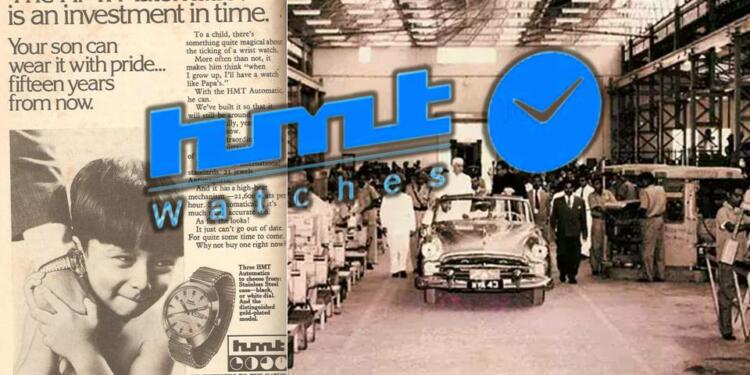India was under the clutches of England when the mechanical revolution started throughout the world. The country remained as the effective source of raw materials supporting the industrial revolution in England. This did not let the country grow its own base of modern industries and associated products of mechanics. India reclaimed its existence from Britain with zero industrial bases. So, the government took the job into its hand to support the industrial growth in India. Thus, multiple state-owned companies were created. HMT Watches Limited, the subsidiary of government-owned company HMT Limited, was also the product of the same effort.
Although HMT Limited was established in 1953, the manufacturing of watches under HMT Watches Limited started in 1961 with the collaboration of the Japanese Company Citizen Watch.
Played alone and became the winner
Coinciding with India’s socialist economic growth, throughout its golden times, the company was the lone watchmaker in India. It grew during times when India had enacted the Monopolies and Restrictive Trade Practice Act, 1969. The Act restricted private industrial growth and with state funding, created public companies, which absorb every resource of the people. It did not let the innovation grow and provide any substantial competition to state-owned companies. Further, the other legislation enacted to secure the state-owned company was the Foreign Exchange Regulation Act (FERA), 1973.
Virtually they created legal protection for the market dominance of HMT, and many quality and quantity-related barriers were imposed on foreign brands. On one hand, domestic private players were not capable enough to challenge its market supremacy and on the other, foreign companies were barred from entering the Indian market.
HMT initially started with mechanical technology in watches, where you have to mechanically hand-wound the watch which would reserve the power for 36 hours in the machine. Without any battery or cell, the watch was effectively a ‘manual machine’.
Although the company tried its best to introduce automatic quartz watches in 1981, but the lack of cost competitiveness failed them again. HMT then resorted to its ‘emotional’ marketing strategies.
Solely dependent on state funding for production, the company continued to maintain the legacy of staunch socialist principles. Without sustainable market growth, the company never intended to reduce the cost and compete in the open market. Like other Public Sector Units (PSUs), the HMT watches too suffered from the ineffective managerial crisis and constantly absorbed the public money. HMT ruled the Indian watch market for three decades with at most 90% market share, with a single USP (Unique Selling Point) of emotional connection.
Also Read: Energy Drinks: A Classic case of inventing a problem to sell the solution
The competition decided the winner
The company faced its first competition in 1984 when a joint venture between TATA Groups of Companies and Tamil Nadu Industrial Development Corporation (TIDCO) incorporated Titan Watches Limited, and after three years of incorporation, launched the automatic quartz watches.
Where HMT failed to capture the automatic quartz watches market, the price competitiveness provided Titan with huge success and wrote the beginning of the end story for HMT Watches Limited. The time coincided with the Globalisation of the Indian market and introduced many foreign watch-making brands like Citizen and Casio of Japan, Timex and Tommy Hilfiger of USA, Gucci, Rolex and Swatch of Switzerland, and Armani of Italy.
From here, the downfall of the outdated and ineffective brand HMT started. Earlier enjoying the market monopoly due to the absence of competition, it had to face the open market reality. The emotional USP of the brand was no longer a deciding factor. India became a globalised nation where fashion, quality, and price competitiveness became the essence of product success.
Also Read: In a decade or two, Parle will be forced to stop producing Parle-G
Bhaskar Bhat, Managing Director of Titan’s Ltd, speaking on the failure of HMT Watches said that HMT failed to understand that “a watch was no longer a time-keeping machine. It was becoming a fashion accessory for both men and women. Consumers wanted a well-designed product to match their style. Aesthetics play an important role in marketing”.
So, it would be true to say that the scarcity of options made HMT a dominating brand in the Indian watch industry. The company ruled for three decades not because its watches were the best, but because the funding and policy of the state were ‘the best. The company continued to absorb state funding and finally when the Modi government came into power, they decided to shut down the HMT watches limited as per the recommendation of the Board for Financial and Industrial Reconstruction report.
Support TFI:
Support us to strengthen the ‘Right’ ideology of cultural nationalism by purchasing the best quality garments from TFI-STORE.COM.

































